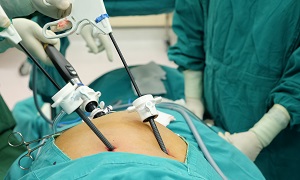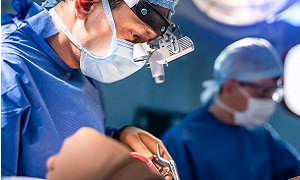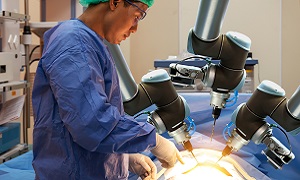Cystectomy
Cystectomy, which is also known as bladder removal surgery, is a surgery for removing the urinary bladder. In men, having the entire bladder removed usually includes the removal of the prostate as well as seminal vesicles. In cases of women, cystectomy involves the removal of the uterus, ovaries, and parts of the vagina.
A surgeon needs to create a urinary diversion as well, after removing the bladder. This is to store urine and have it leave the body. There are several ways that urine can be stored as well as eliminated after removal of the bladder. Your doctor is able to decide which method is the best for you.
Cystectomy is generally performed for treating invasive or recurrent noninvasive bladder cancer. Cystectomy might also be performed for treating any kind of other pelvic tumors.
Purpose
Cystectomy can be performed for several reasons. Some of them include:
- Cancer that begins in the bladder or that begins nearby and grows to involve your bladder
- Birth defects affecting your urinary system
- Neurological or inflammatory disorders affecting your urinary system
The type of cystectomy and reconstruction that will be performed can depend on several factors, such as the reason for your surgery, your overall health, etc. You can discuss with your surgeon which procedure is best for you.
Preparation
Before your procedure, you will need to discuss with your doctor regarding any medicines that you take or whether you use any caffeine, alcohol, or any such drugs. You might also need to make changes to your medications, or avoid certain substances to help with your recovery after the surgery.
If you smoke, it is best to quit it before your surgery. Smoking is a risk factor for bladder cancer, and it also increases any risk of developing problems after the surgery.
After your surgery is scheduled, you are going to receive specific instructions on how you can prepare for it.
Procedure
Depending on your condition, your procedure can be of two types:
Partial cystectomy
In partial cystectomy, only a part of your bladder is removed. Usually, lymph nodes nearby are also removed to determine whether any cancer has spread beyond your bladder.
Radical cystectomy
In a radical cystectomy, surgeons remove your entire bladder and the lymph nodes near it. Surgeons generally almost always cut the vas deferens and remove any prostate and seminal vesicles. For women, doctors generally remove the uterus, fallopian tubes, ovaries, cervix, and in some cases, parts of the vaginal wall.
Ways of surgery
There are generally three ways in which the surgery might be performed:
Minimally invasive surgery
Open surgery
Robotic surgery
You will first receive general anesthesia that helps to keep you asleep throughout the surgery. Once you are asleep, the surgeon will be cutting into your abdomen. In the case of open surgery, there will be one large incision, while in the case of minimally invasive or robotic surgery, there will be several smaller incisions.
Next, your surgeons remove the bladder along with the lymph nodes nearby. Your surgeon might also need to remove other organs near the bladder including the urethra, prostate, and seminal vesicles in men. In cases of women, it includes the urethra, uterus, ovaries, and parts of the vagina.
After your bladder is removed, your surgeon will need to reconstruct the urinary tract so that urine can pass the body. This can be done in various ways.
- Ileal conduit- In this method, the surgeon disconnects a short portion of your small intestine known as the ileum. The ureters, i.e. the tubes carrying urine from the kidney to the bladder, are attached to one end of the ileum. The other end of the ileum can be attached to an opening in the skin which is known as a stoma. The stoma is generally located close to your belly button on your right side. For collecting urine, a plastic appliance, known as an ostomy bag is placed over the stoma.
- Continent cutaneous diversion- In this method, your surgeon creates a reservoir for storing urine from parts of your small and large intestine. The ureters are attached to one end of the reservoir. The other end of the reservoir is meanwhile connected to a small opening known as a stoma, in the skin of the abdomen. The reservoir is able to store urine and it needs to be emptied periodically by inserting a small drainage tube known as a catheter into the stoma. There is a need for an external bag.
- Neobladder- In this method, your surgeon uses a long piece of the small intestine for creating a reservoir for storing urine. These ureters are attached to one end of the reservoir, while the other end of the reservoir is connected to your urethra, the tube carrying the urine out of your body. You can empty your reservoir periodically by relaxing the pelvic muscles and tensing the abdominal muscles.
After the Procedure
You might require staying at the hospital for around five-six days after your surgery. This time is generally required so that your body is able to heal from the surgery. The intestines tend to be the last part to be awake after the surgery, and therefore you might need to be in the hospital until the intestines are again ready for absorbing fluids and nutrients.
On the day after the surgery, your healthcare team will likely have you get up and walk. Walking can help to promote healing and it can also help your bowel function to return. It improves your blood circulation as well and also prevents joint stiffness and blood clots.
You might also experience some pain or discomfort around the incision or incisions for some weeks after your surgery. As you continue to recovery, your pain is going to get better gradually. Before you get discharged from the hospital, you will need to talk with your doctor about medications and any other ways to improve your comfort.
It is also likely that you will be seeing mucus in your urine since the piece of intestine used in the procedure will still be making mucus like the intestines normally do. Over time, you will be seeing less mucus in your urine, though it is likely that it will never go away completely.
Few weeks after your surgery, you will likely need to return for follow-up appointments. Your doctor will check to make sure that your upper urinary tract drains adequately and you don’t experience any electrolyte imbalances.
If the cystectomy was performed for treating bladder cancer, your doctor will be recommending regular follow-up visits for checking for the recurrence of cancer.
During the first two months after the surgery, it is best if you can restrict some activities such as lifting, driving, bathing, and going back to your regular routine. Gradually, you will be regaining your strength, and your energy level will increase. You can also discuss with your doctor when it is safe to resume sexual activities.
Risks
Like all major surgical procedures, a cystectomy poses a few risks, which includes:
- Bleeding
- Blood clot infection
- Organ damage
- Reactions to anesthesia
It is likely that you will be seeing changes in how you urinate after any bladder surgery. Your bladder is smaller after partial cystectomy, and therefore you might need to go to the bathroom more often. If you have a radical cystectomy, your ability to urinate will be depending on the type of reconstructive surgery that you have.
For some men, bladder removal surgery can cause sexual side effects as well. Some men might experience difficulty getting and maintain erections. Also, men will not produce semen anymore, as the doctor removes the seminal vesicles along with the bladder.
Women can also experience some sexual side effects. Though intercourse is still possible, it can cause discomfort if doctors remove parts of the vagina. Some women can also have nerve damage, and this damage can limit a woman’s ability to become aroused and have an orgasm.



